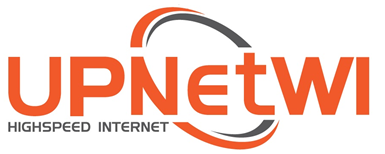We use cutting-edge tools and technologies to deliver superior broadband service to our customers. (The Federal Communications Commission defines broadband as download speeds of at least 25 Mbps and upload speeds of at least 3 Mbps.) The list to the right showcases the technologies that are used in our daily operations. If you’re curious, keep reading to learn about the technologies used in our two types of service, fixed wireless and fiber.
Fixed wireless
Fixed wireless technologies generally include directional radio antennae on each end of the signal (for example, from an UpNetWI tower to your home or business). These antennae are designed for outdoor use, can accommodate a variety of weather conditions, and typically operate on portions of the radio spectrum reserved internationally for industrial, scientific, and medical (ISM) purposes.

Fiber
Fiber technologies include cables made of thin glass filaments (fiber optic) that transmit data underground using light and lasers. This enables the signal to maintain very low attenuation. In other words, the strength of the signal sent to your home does not get weaker as it crosses greater distances. In addition, because fiber operates using modulated light instead of electricity, it can transmit larger quantities of data (bandwidth) than other forms of cable internet. The physical constraints of electricity running over metal (copper cables) do not apply to fiber internet.








